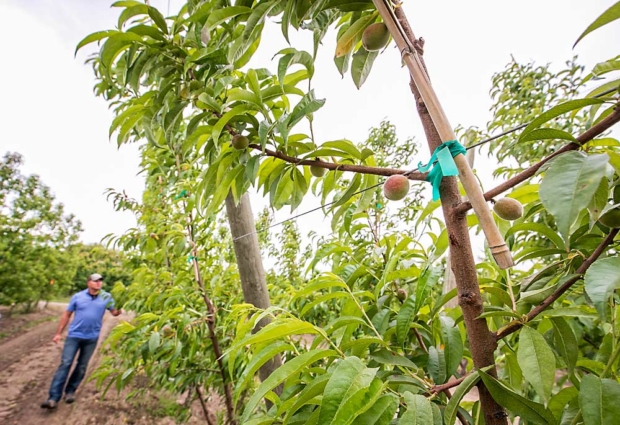
With a decade of experience farming peach and nectarine orchards under organic certification, grower John Douglas says the organic aspects of his operation are far from his top challenges.
“As far as the peaches and nectarines go, our challenges are the winter and the wind,” said Douglas, orchard manager for the Douglas Fruit Co., based in Pasco, Washington. “The challenge with organic is that we only have one bullet for everything.”
So far, the bullet — either Entrust for insect pests or lime sulfur for disease control — still works and Douglas Fruit is the lead player in Washington’s shift toward organic production as a way to stay competitive in the summer fruit space.
At about 8,000 tons a year, Washington peach production pales in comparison to California, and it ranks seventh in terms of U.S. tonnage, after South Carolina, New Jersey, Georgia, Pennsylvania and Colorado, according to 2018 data from the U.S. Department of Agriculture.
But 35 percent of that production was certified organic in 2018. Compare that to 14 percent of the state’s apple production.
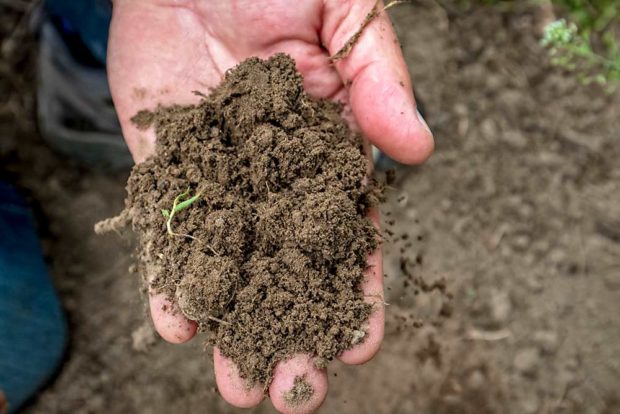
“Organic is our niche,” said B.J. Thurlby, president of the Washington State Fruit Commission. Considerably more of the state’s fruit is actually grown organically than the statistics reflect, he said, but isn’t always marketed as such due to demand.
California grows more organic peaches, too — but 10,700 tons in 2016 accounts for less than 2 percent of the state’s production. And Colorado produced just over 1,000 tons of organic peaches in 2016, about 8 percent of its total crop.
“We went organic mainly for marketing purposes,” Douglas said. “We’re trying to differentiate ourselves from California. They set the price, but we get maybe a dollar or two more (with organic).”
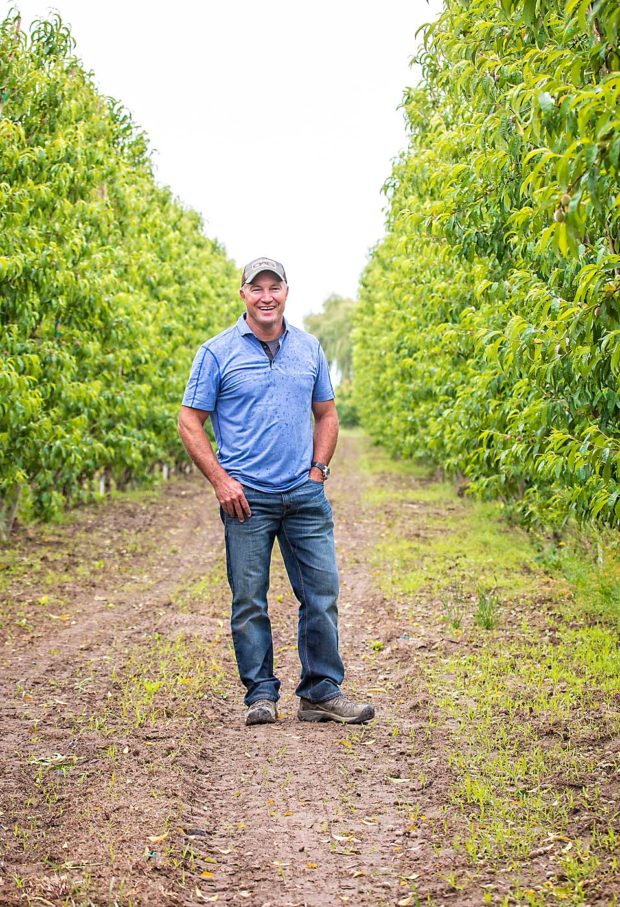
In Washington, more summer fruit growers are following Douglas’ lead, moving to organic certification for their peaches, nectarines and apricots in search of prices that can keep up with production costs. Even the culls can fetch a decent price, due to demand from organic processors making baby food, said Jill Douglas, co-president of Douglas Fruit.
Ask a handful of Washington summer fruit growers about going organic and they’ll all tell you to talk to John Douglas — even if they are doing it in their own orchards as well.
“Douglas is the place that has the best knowledge,” said Dick Conrad, who said he got dragged into trying to go organic about a decade ago when Douglas, his packer, made the switch. It didn’t go well for him the first time and he went back to conventional. Now, he’s giving organic farming another try for his peaches and nectarines, and this time, he’s cautiously optimistic.
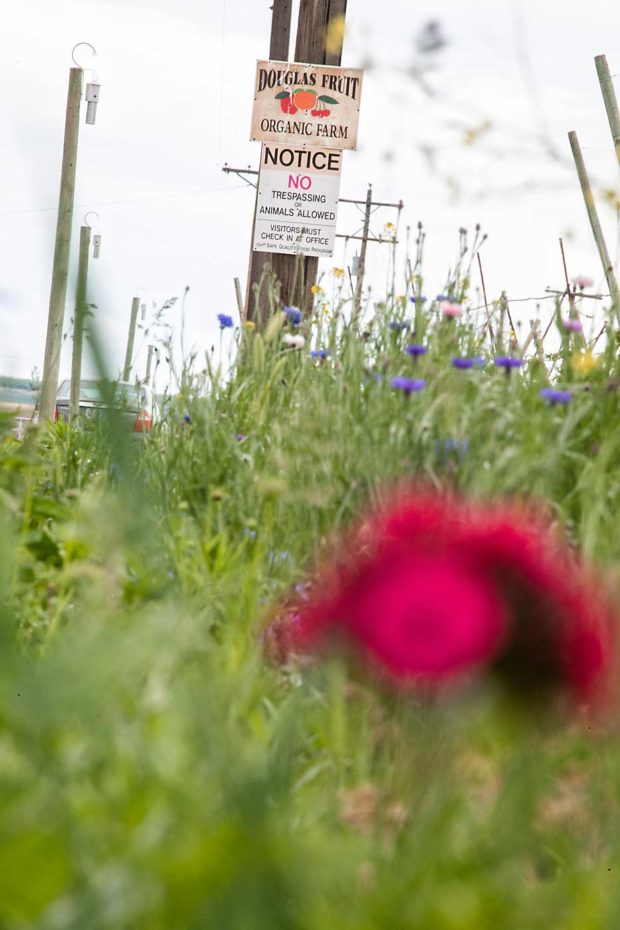
Douglas shrugs off the suggestion that he’s the go-to guy for organics. During a tour of a Columbia Basin summer fruit orchard this spring, it was clear he’d rather talk about new innovations in systems and the importance of planting new varieties that really have the flavor needed to lure return customers.
On the systems front, Douglas is moving his new peach and nectarine plantings to a unique trellis system for more uniformity and opportunity for mechanization. The traditional freestanding V system creates tall trees that would be efficient for platforms, but with some leaders leaning far more into the aisle than others, it’s hard to move through with the equipment.
“We’d like to take advantage of the new platforms and maybe the Darwin string thinner,” Douglas said.
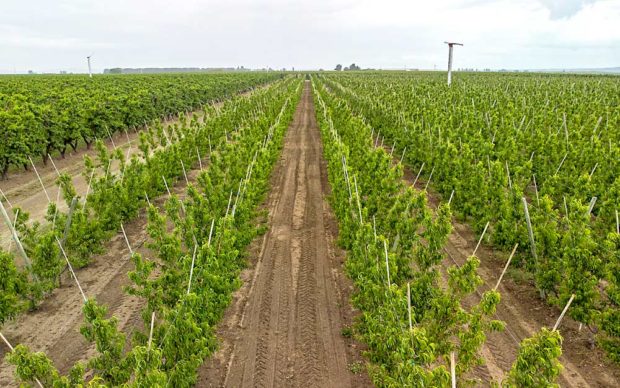
Currently, hand thinning peaches to a target of about 15 tons per acre costs $1,500 to $1,800 per acre. Nectarines tend to set less of a crop and drop more on their own, so it only costs about $1,000 per acre, and he thinks a string thinner might be able to reduce peach labor costs to a point similar to those of nectarines.
Trellises are rare in peaches, due to worries about wounding from wires and disease risk in more humid regions, as well as the challenge of keeping the vigorous trees productive in their space. Douglas uses just two wires, high enough that workers can easily walk under the lower wire. There’s no need to train branches to wires, as in apples, since peaches fruit only on new wood every year, he added.
And to protect the trees from wire injuries, a bamboo stake runs between the leader and the wires.
“We’re trying to plant a little closer in density, but peaches and nectarines are really light sensitive, so we still need wider aisles” than in apples, he said.
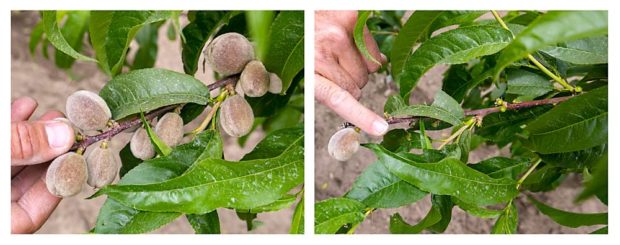
The uniform young blocks on trellises stand in stark contrast to the peach and nectarine blocks nearing their 20-year life expectancy on the other side of the orchard. There’s trunk damage from winter injury, missing leaders and stretches of blind wood.
Douglas would like to have 16 to 18 hangers, with roughly three limbs per hanger, to get the desired 90 to 120 fruit per leader. But in the older blocks, sometimes there are only half as many productive hangers left.
“So, then we have to get creative,” he said of the gaps. “You still want to space (the fruit) to get the color.”
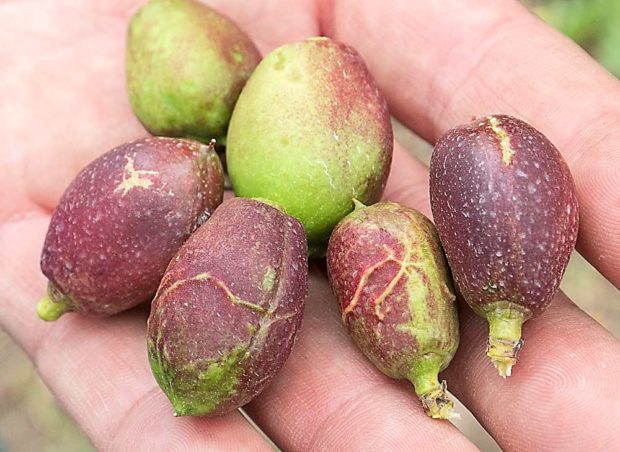
Three original blocks on the farm may be in their last season or so, before being ripped out and replanted with new varieties in the new system.
Replanting requires fumigation, Douglas said, but then the three years it takes to grow trees into production also accounts for the transition back into organic certification.
Transitioning to organic has actually been easier in the summer fruit than in apples, he said. There isn’t one critical pest that can get out of control and threaten an orchard like the problem codling moth poses in organic apple blocks, he said.
The bigger problem: There aren’t a lot of tools for when problems do arise, he said.
That makes the arrival of a new pest such as spotted wing drosophila unnerving. Entomologists have said that SWD doesn’t appear to damage unripe peaches or nectarines, but Douglas said he has experienced losses when the Entrust (spinosad) program he puts on for other pests stopped too early on late peaches.
If SWD developed resistance to spinosad, “that’d be the end of this,” Douglas said.

Other common organic challenges, such as weed control and nutrition, had a learning curve but now work well.
“I was nervous about weed control, but that hasn’t been an issue,” he said. They cultivate regularly in the tree rows with the Wonder Weeder and disc the aisles every few years, both tools that work great in the wide peach systems.
What’s next for the company that’s leading the organic summer fruit market? New cultivars that put flavor first, Douglas said, in a block of a nectarines known as Summer Flair.
“We are working hard as a company to get that flavor profile,” he said. “It may be big and beautiful, but we want that flavor.” •
—by Kate Prengaman






Leave A Comment